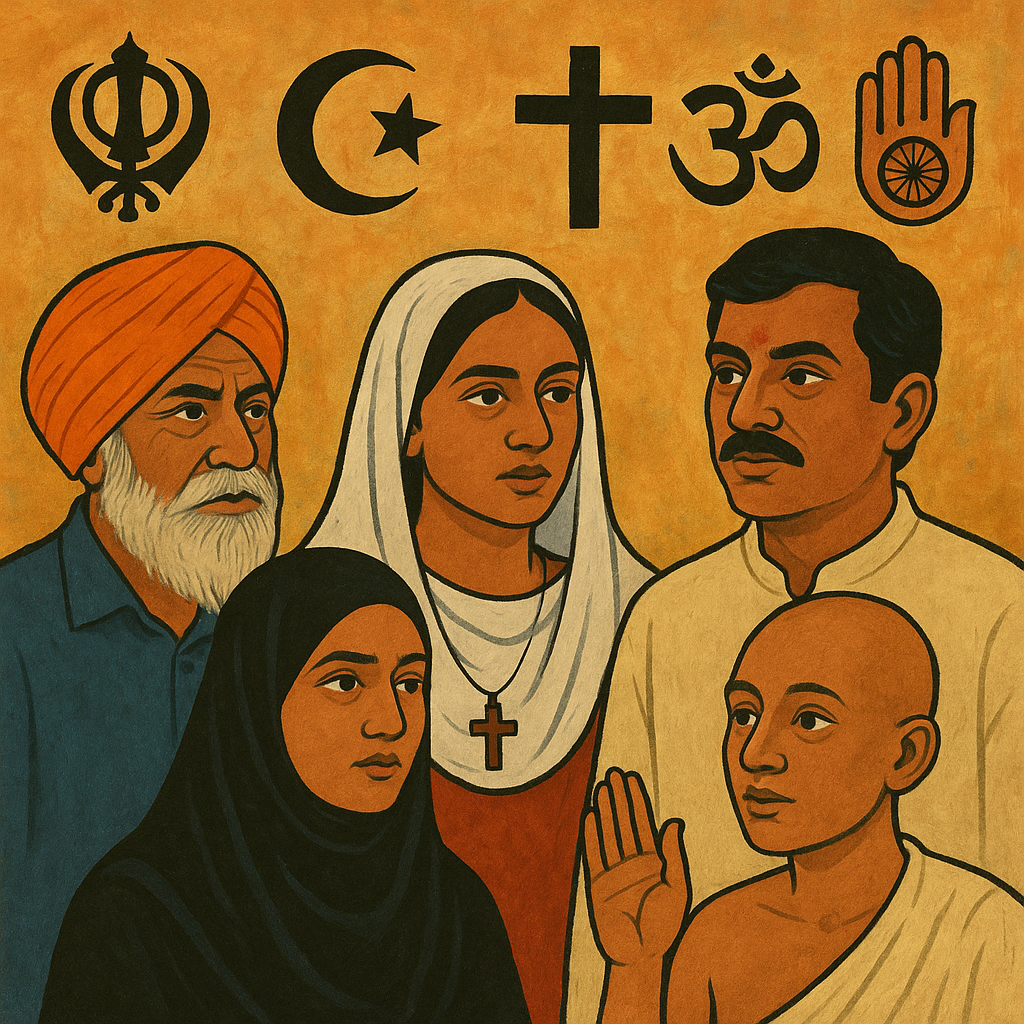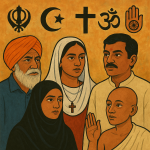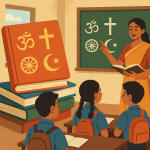Minority Faiths in India: Voices, Visibility, Vulnerabilities
India is known across the world as a land of spiritual diversity — a place where countless faiths, languages, and philosophies have coexisted for centuries. From Hinduism, Islam, Christianity, and Sikhism to Buddhism, Jainism, Judaism, Bahá’í, and Zoroastrianism, India’s religious mosaic is vast and unique. Yet, within this harmony, the minority faiths — smaller in number but rich in tradition — often struggle for visibility, representation, and security in a rapidly changing social and political landscape.
As India modernizes and redefines its national identity, the experiences of these minority communities offer a crucial insight into the balance between pluralism and power, tradition and tolerance.
The Landscape of Faith Diversity
According to the latest census data, India’s religious majority — Hindus — make up roughly 80% of the population, while the remaining 20% belong to minority faiths. Muslims form the largest minority, followed by Christians, Sikhs, Buddhists, and Jains. Smaller but historically significant groups such as Zoroastrians (Parsis), Jews, and Bahá’ís have also made India their home for centuries.
This diversity has been India’s strength, shaping its culture, literature, music, and festivals. The syncretic traditions of Sufism, Bhakti, and Sikhism emerged precisely because of this interfaith dialogue. Yet, in today’s environment of political polarization and cultural assertiveness, the balance of mutual respect sometimes feels under strain.
The Challenge of Visibility
One of the key issues facing minority faiths in India today is visibility — not merely in numbers but in narrative. Mainstream media, textbooks, and cultural conversations often overlook their contributions. For instance, few students learn that Parsis played a vital role in India’s industrial revolution, or that the Bahá’í Lotus Temple in Delhi is one of the world’s most visited places of worship.
Smaller faith communities often find their voices drowned in the noise of majoritarian politics or cultural dominance. Their traditions and festivals receive limited public recognition compared to the major religious events that shape national calendars. This lack of representation not only affects public perception but also weakens the preservation of these communities’ cultural heritage.
In response, many young members of minority groups have turned to digital platforms to reclaim their visibility. Social media has become a modern tool for faith expression — from Jewish youth in Mumbai sharing their heritage online to Zoroastrians documenting rituals for future generations. These virtual spaces are helping minority faiths remain relevant and resilient in the digital age.
Vulnerabilities in a Changing Society
While India’s Constitution guarantees freedom of religion, the ground realities can be more complicated. Instances of discrimination, social exclusion, or targeted violence — whether due to faith, dress, or dietary habits — remind us that minorities often live with an undercurrent of vulnerability.
For example, some Christian and Muslim communities in rural India have faced challenges related to conversion laws or communal tensions. Smaller groups like Jews or Bahá’ís, though generally safe, sometimes struggle with declining populations and limited institutional support.
Moreover, demographic anxiety and politicization of religion have occasionally led to identity-based polarization, making it harder for minorities to assert belonging without being labeled “outsiders.” In such times, the principles of secularism and pluralism — long considered India’s moral anchors — are tested.
Resilience and Contribution
Despite these challenges, India’s minority faiths have shown remarkable resilience. Their contributions to education, healthcare, business, and philanthropy are immense. The Christian missionary schools and hospitals, the Parsi industrial families, and the Sikh community’s langar service during crises like Covid-19 are enduring examples of faith-driven social service.
Buddhists have revitalized India’s ancient spiritual heritage through sites like Sarnath and Bodh Gaya, attracting global pilgrims and scholars. Meanwhile, Jain communities continue to promote non-violence and environmental ethics that align with modern sustainability movements.
In this sense, India’s minorities are not merely “protected groups” — they are active shapers of national identity. Their ethics of service, simplicity, and interfaith respect continue to enrich the broader social fabric.
Education, Representation & Policy Gaps
One major way to strengthen minority voices is through education and representation. Including the history and philosophy of minority religions in school curricula can nurture empathy and understanding from a young age.
Policy frameworks like the National Commission for Minorities (NCM) aim to safeguard minority rights, but implementation remains uneven. Grassroots initiatives — such as interfaith youth dialogues, inclusive cultural festivals, and scholarship programs — can help bridge divides more effectively than top-down policies alone.
Representation in government, media, and academia is equally critical. When people from minority backgrounds are part of decision-making, the policies and narratives that emerge tend to be more inclusive and balanced.
Towards Inclusive Pluralism
India’s diversity is not just demographic; it is spiritual and philosophical. The ancient idea of “Vasudhaiva Kutumbakam” — “the world is one family” — remains a guiding light. But to live up to that vision, India must ensure that every voice, big or small, is heard and respected.
For that, the focus must move beyond tolerance toward active inclusion — creating spaces where all faiths can express themselves freely without fear or invisibility. Religious minorities should not have to shrink their identities to fit in; their presence should be celebrated as integral to India’s civilizational richness.
Harmony Through Recognition
The story of India’s minority faiths is not just about survival — it’s about contribution, creativity, and courage. Their voices deserve to be part of the nation’s ongoing dialogue about who we are and what kind of society we want to become.
True secularism is not the absence of religion, but the presence of equal respect for all religions. In a time when polarization threatens unity, listening to minority voices is not a political act — it’s a moral necessity.
As India steps further into the 21st century, protecting its pluralistic soul will depend on how well it nurtures these diverse faiths — not as guests in the house of India, but as its very foundation.
~Religion World Bureau









